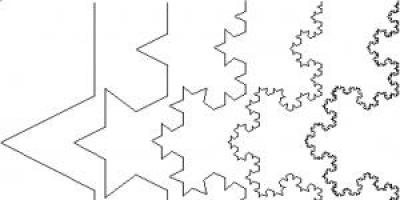Repair work on a window opening does not end with the installation of a new double-glazed window. At the next stage, the question arises of choosing the material for forming the slopes. Among possible options you will have to choose between plastering, plastic finishing or plasterboard. The latter method is affordable in terms of financial costs and has a simple installation process. Having become familiar with the characteristic properties of the material and the features of the formation of slopes from plasterboard, you can do the procedure yourself without much difficulty.
Properties of drywall
The decision to decorate slopes with sheets of plasterboard has a number of advantages. First of all, this is an opportunity to do all the work yourself, without involving specialists. As a result, you will receive a window opening with slopes that has an aesthetic appearance and meets all the requirements for repair work. This is due to the properties of drywall, which include:
- High level of sound and thermal insulation. If you want to enhance the protective properties, the slopes are formed with double sheets of plasterboard with additional installation insulating material.
- Slopes made of plasterboard are characterized by light weight. To install the structure, you will only need to make a frame profile without reinforcement.
- It is much easier to create a perfectly flat surface of slopes with sheets of plasterboard than when plastering a window opening. This helps speed up the finishing process.
- Due to breathability, plasterboard slopes do not deform when changing temperature regime or indoor humidity level.
- Even with additives, the material is different environmental safety, slopes made of plasterboard do not emit harmful substances.
- When working with drywall, there is no problem with a large amount of debris.
The numerous advantages of the material are accompanied by minor disadvantages that should be taken into account when installation work ah with slopes:
- The fragile product requires careful handling during installation, so mechanical damage should be avoided.
- Even moisture-resistant drywall needs protection from water, its impact on large quantities or over a long period of time will provoke the destruction of slopes.
Depending on the room where the slopes will be installed, drywall with the addition of certain additives is selected:
- Suitable for normal environment standard material, withstanding air humidity levels up to 70%.
- Exceeding the established limit will require the use of moisture-resistant drywall mixed with antifungal and hydrophobic additives.
- If there is a risk of fire, it is better to make slopes from fire-resistant plasterboard sheets containing mineral wool or fiberglass particles. This type of finishing material is rarely used, but its additional advantage is increased mechanical strength.
The breathable properties of plasterboard ensure the absorption of excess moisture or its release when there is a deficiency in the surrounding atmosphere without mechanical changes to the entire structure of the slopes.

Preparatory stage
Preliminary preparation for the process of installing slopes will require the following: Supplies and tools:
- screwdriver;
- tape measure and mounting knife;
- building level to control the level fixation of slopes;
- rule;
- drywall floats;
- fastening elements;
- liquid nails;
- construction whisk and water container;
- rags and additional waterproofing material;
- coatings in the form of primer and paint for finishing finishing works.

You can attach plasterboard slopes glue method or install on profiles. The surface to be covered with slopes needs the following treatment:
- Surplus polyurethane foam, which arose during the process of sealing new window frames, are removed using a knife. It is recommended to trim when the foamed areas have completely dried; this action is usually performed a day after installing the double-glazed window.
Note! The opening needs to be treated with a primer to prevent mold or fungal formations.
- Preliminary finishing of future slopes will help isolate the foam from contact with air and prevent its premature destruction. cement mortar, prepared in proportions with water 1:4.
- Insulation and waterproofing will extend the service life of the slopes, since the base of the material, gypsum, is subject to gradual destruction due to the formation of condensation. The absence of recommended protective measures will provoke the destruction of slopes within several years.
- To maintain the exact level around the perimeter of the window opening, where the installation of slopes is provided, a special corner is attached, directed towards the window with its smaller side.

Installation of slopes
The installation process begins with measuring and cutting drywall. Using the following expert advice, cutting the part straight will not be difficult:
- The rule is pressed tightly against the intended contour of the part and applied with such force that the upper part of the drywall is cut through to the gypsum layer.
- Turning the sheet over to the opposite side, carry out a similar procedure.
- Finally, the rule is pressed against the cut line, and the second edge of the sheet is raised upward, as a result of which the material breaks along the intended border perfectly evenly.
Advice ! The formation of slopes from plasterboard is carried out using a special glue with a thick consistency. This will ensure reliable fixation of the material.
Installation begins from the top of the window, followed by finishing the side surfaces and consists of the following steps:
- The material is fastened to the slope corner using metal screws. To temporarily hold the strip during fixation, it is convenient to use supports.
- A filler is placed in the space between the slope detail and the window opening, which performs insulating functions. Excellent for these purposes mineral wool, capable of insulating the structure and preventing the formation of condensation.
- The front edge of the window opening is treated with glue to a depth of up to 0.1 m (depending on the thickness of the wall). It is recommended to apply the composition at short intervals to leave room for even distribution of the glue.
- The edge of the plasterboard part is pressed against the slope. At this stage you will need to use building level to check the horizontal line.
- Excess adhesive mixture from the edge plasterboard slope are removed with a spatula, after which a break is necessary to dry the composition.

Similar procedures must be done when installing the side panels and the bottom part.
Note! You can remove the spacers and continue finishing an hour after completing the work.
Finishing process

Finishing is necessary to give the plasterboard structure a complete look. For these purposes you will need putty and paint. The installation of a profiled metal corner can prevent premature damage to external corners formed from plasterboard. To do this, perforated protective elements are glued to the sloped corners. As in working with plasterboard slope parts, to avoid voids and unevenness, the glue is evenly distributed over the entire surface. Next, take the following steps:
- Metal protective element pressed all the way into the fixing mixture. It can be putty or glue. Excess composition that has come through the holes is carefully removed with a spatula.
- Be sure to ensure that horizontal and vertical lines are maintained by regularly using a building level. After installing the profiled corners, they are puttied. Protective covering plasterboard slopes are formed in two layers, with regular leveling of depressions and hillocks.
- Minor defects can be removed with fine-grained sandpaper or grinder.
- After the putty has hardened, treating the surface with a primer in two layers with intermediate cleaning with a fine abrasive mesh will help mask the scratches.
- Finally, the plasterboard slopes are covered water-based paint.

Advice ! For finishing it is appropriate to use rubber paint, which will provide the ability to wash the slopes and additional protection drywall from mechanical damage.
Nuances of the installation process
Compliance with all recommendations will prevent the appearance of defects not only upon completion of finishing work, but also during further operation. However, often first initial stage When measurements are taken and drywall is cut, mistakes are made that spoil the aesthetic appearance designs. The most common problem is the formation of a noticeable gap between the joined panels. To correct the mistake, they resort to the use of liquid plastic, but the end result does not benefit from this, since drywall and plastic have significant differences in texture.
In this situation, professionals advise designing the side and bottom parts of the structure from plasterboard plastic profile. Its use helps to hide the problem of a loose fit or resulting irregularities.
Finishing slopes with plasterboard is quite easy to do with your own hands. The method refers to the most popular type of design for entrance doors, interior doors, and also for windows.
Installation is simple, and after installing drywall, the openings are beautiful, smooth and strong. There are other design methods, but using gypsum boards is simpler and cheaper, especially if the seam is on a window or doorway big.
Properties of drywall
When planning to make window slopes from plasterboard with your own hands, you need to learn about the advantages and properties of the material. The first thing to notice is the ability to carry out work with your own hands, without the help of craftsmen. The final result will please you and meet all repair requirements.
After cladding, the material can be sheathed, the opening can be decorated with tiles and other finishing materials, for example, using painting or wallpapering. The main properties of drywall when designing slopes are presented in the table:
| Properties: | Description: |
|---|---|
| Decent level of sound insulation and thermal insulation: | If you need a window opening and window sill, you can not only cover it with plasterboard, but also lay an additional layer of insulating materials to strengthen the structure and insulation qualities. |
| A light weight: | Due to the small mass of plasterboard, there is no need to use special technologies for installation; installation is carried out on a metal profile from which the metal frame is created or on adhesive mixtures. |
| Ideal plane: | The plasterboard sheets are perfectly flat, due to which the slopes on windows and doors will be smooth, which greatly facilitates the process of finishing with putty, and also speeds up the creation of slopes. |
| Breathability: | Due to its properties, the slope does not allow deformation, even if there are strong temperature changes or there is high humidity in the rooms. |
| Environmental friendliness: | Although plasterboard sheets may contain additives, the material is environmentally friendly and slopes can be made in children's rooms. Drywall does not emit toxic substances. |
| Minimum amount of garbage: | During installation work, there is almost no waste, dust and other debris from the plasterboard material. |
For window slopes from plasterboard, it is necessary to choose the right sheets, which will have certain types of additives and other additives:
- To design slopes in a normal environment, in a residential building or apartment, standard drywall is used, which can withstand humidity up to 70%.
- When using plasterboard on the street side or in the bathroom and other damp places, moisture-resistant plasterboard is used; the material additionally contains antifungal and hydrophobic impurities.
- To reduce the likelihood of fire, for the slopes of windows and doors, it is used fire resistant material, which already contains admixtures of mineral wool and fiberglass. This type of plasterboard sheet is rarely used, but it is very durable in itself.
Important! Drywall is a breathable material, due to which it can absorb moisture and, if necessary, release it into the atmosphere without changing its shape.
Finishing a window slope with plasterboard (video)
Advantages of plasterboard cladding
The material has been used for window and door slopes for quite some time. This is not surprising, because it has a number of advantages:
- Environmental friendliness and safety for human health.
- Low material cost.
- Easy to install.
- Minimal maintenance of ready-made slopes.
- Stylish look.
- The ability to make an arched opening and other complex shapes.
- Long service life of plasterboard slopes.
- Possibility of additional insulation of windows or doors.
- Versatility: used not only for windows and doors, but also used for leveling ceilings and walls.
Important! Although plasterboard material has a number of advantages, it also has a disadvantage: the sheets are easily damaged mechanically, even material protected from water can be destroyed due to prolonged contact with it.
Preparation for finishing
Before making slopes from plasterboard, you will need to prepare a window or door. In terms of preparation, a plasterboard door slope and a window slope are almost the same, but for doors the following is taken into account:
- Presence of communications. For example, wires for the Internet, electricity or a call. The installation is done before the installation of the doorway begins.
- Possibility to install second entrance doors. The need arises if the first door is not insulated, and the sound insulation of the doors does not matter.

Preparing the opening is as follows:
- When an old window or door is dismantled and a new product is installed, the foam remains and its remains are cut off.
- Use a hammer or other device to remove plaster and other protruding parts on windows and doors. Often there may be a metal pin and other elements under the plaster; they are cut off.
- The gap, hole and other defects in the opening must be puttied.
- The joints that appear between window frame or interior doors must be coated with sealant.
- After the putty and other mixtures have dried, a primer is applied in two layers around the perimeter of the opening.
At the end of the preparatory work, the opening is completely cleaned of dirt. Everything is swept and dried. In order not to damage the window or door frame, it is sealed with masking tape and cardboard.

The frame design method is convenient and practical. True, installation of the material is somewhat more complicated, because the U-profile needs to be fastened with self-tapping screws, which is more difficult and takes longer. The fixation is carried out securely, everything is screwed in flush with the drywall so that the frame is strong. Step by step, you can make the sheathing of the opening yourself like this:
- Wooden planks or metal profiles are used for the frame.
- The material is cut to fit the opening. The slats need to be installed along the entire perimeter of the slope, at the internal and external corners. For reliability, cross bars are attached.
- If desired, insulation, in the form of mineral wool, is placed into the frame; it is installed in ready-made cells.
- Now the plasterboard sheets cut to size are fixed. Trimming is carried out only if the manufacture of the frame is completed.
- At the end, sheathing is carried out with plasterboard sheets directly to the profile or slats.
The advantage of this method is the need to line the slope and adjacent walls. The disadvantage of this method is that it reduces the space in the opening, especially when it comes to a door.
Glue method for finishing slopes

There is an option for decorating the slope using an adhesive solution or putty. Instructions on how to glue drywall are presented below:
- Place putty or glue on the cut parts. When using putty, it is better to use a finishing compound. The material is applied around the perimeter and slightly in the middle.
- The prepared slopes are moistened with water and drywall can be glued to the slope. Initially, the top element is installed, and then the side parts.
- When the wall and drywall are connected, you can press down the sheet and shake it a little to the sides so that the glue spreads and the drywall itself sticks.
- If the sheet is fixed tightly and does not move, then everything is left until it hardens completely. According to the advice of the experts, it is better to wait about a day or even two. If the drywall is not securely fixed, it is recommended to support it with strips at the edges and in the middle. When the mixtures dry, the planks are removed.
The disadvantages of the method are similar frame technology, but here are the advantages: the work is done faster, not as expensive, and as reviews show, installed slope serves for 10 years, nothing lags behind the walls. From the outside, the glue is immediately removed if it comes out, until it hardens.
Installation on polyurethane foam

You can seal the slope by fixing the drywall with foam. The seal is very simple, but is used if there are few defects on the slopes and the holes are small in size, up to 3 cm. When large sizes, defects must be sealed with foam before installation, correct method filling potholes - using cement mortar or starting type of plaster. You need to sew it like this:
- Dismantle the old coating, remnants of plaster and foam. Next, large potholes are filled.
- When the holes are dry, polyurethane foam is applied to the drywall from the back side of the material. The foam layer is no more than 1 cm. The material is applied in the form of a snake.
- The plasterboard material is placed on the slope and pressed against it. The pressure on the drywall must be strong so that the foam adheres to the slope.
- After this, the drywall comes off, and on the slope and finishing material foam remains. After 10 minutes the foam will increase in size.
- The drywall is again mounted into the slope and pressed against the wall. If necessary, fix the material with spacers and leave it for up to 24 hours without continuing work.
- The next stage is sealing the drywall seams on the slopes using plaster.

The disadvantages of this design of door and window slopes are quite large. The biggest disadvantage is that the surface will first need to be leveled, otherwise the sheet of drywall will not work. Drywall on slopes may bend during installation. There are voids left on the door/window slope, making the fixation not very reliable. But this is the most quick method for finishing slopes with plasterboard. When a window or doorway is covered with plasterboard, using any described method, the opening is finished various materials. But before finishing the slopes, you need to do the following:
- The slope is puttyed with a thin layer.
- On the outside of the opening, protection is placed and a corner is formed using a plastic perforated corner, which is covered with putty.
- Another layer of putty is laid down to completely level the surface.
- Finishing material is selected.
Advice! Painting is used for decoration; you can paint it in any color, for example, the color of a door or window, wallpaper in a room, or use standard white paint. Photos on the Internet will help you decide on your choice; a bay window in an apartment in different colors looks very nice.
Painting is not durable, so for part of the slopes a panel type of material is used, for example, plastic for slopes, instead of plasterboard, PVC panels and other materials, this good material, made according to GOST, is distinguished by its durability. The video shows step by step work with drywall, you can use the method for doors and windows:
Photo gallery of finished works

Drywall is interesting material. It is easy to install and operate, and is distinguished by its durability and practicality. In addition to manufacturing interior walls and partitions, drywall is often used for exterior finishing installed plastic windows.
Finishing work is carried out using different materials: plaster, plastic and drywall. Each method has its adherents. It is worth considering why plasterboard is so good and what its advantages are over other materials for slopes. With proper knowledge of the theoretical part, the question of how to make slopes with plasterboard will not be an obstacle even for beginners.
What is drywall and what qualities does it have?
Drywall is a combination of a layer of gypsum paste and cardboard lining on both sides. This material is already used in the market quite a lot long term. In the form in which drywall is known now, it has existed for more than a hundred years.
Like any material, drywall has a number of advantages, but it is not without its disadvantages:
- Drywall is capable of providing sound insulation, showing a sound absorption coefficient of 35 decibels. However, it is recommended to use a double layer of sheets, placing between them insulating material to improve sound and heat insulation.
- Drywall has a lightweight structure. Square meter a sheet 6 mm thick weighs 5 kg, 12.5 mm thick - 9 kg. Thanks to this, the casing plasterboard structures only requires frame profile for installation. No additional reinforcement of the structure is required.
- An important advantage of using plasterboard finishing compared to traditional plaster is the perfectly flat surface of the sheet. This significantly speeds up the process of covering the window profile.
- Drywall good quality has vapor and air permeability. Thanks to this, a constant temperature and humidity is maintained in the room. When absorbing or releasing moisture, plasterboard for slopes does not change its shape and physical characteristics, which is another notable advantage.
- When installing slopes and sawing drywall sheets, a significant amount of construction waste is not generated.

Despite the advantages listed above, plasterboard window slopes also have their disadvantages:
- The material itself is fragile and therefore requires careful handling during installation.
- Drywall does not have increased strength compared to plastic panels, so even falling on a sheet construction tools can cause mechanical damage.
- The material, including moisture-resistant varieties, is still not highly resistant to water. If it is directly exposed to moisture, this can lead to destruction and soaking of plasterboard slopes.
What types of drywall are used for slopes
There are several types of drywall, depending on the additives and additives used in the base:
- Standard drywall is used for slopes when the air humidity in the room does not exceed 70%.
- Moisture-resistant drywall contains hydrophobic and antifungal additives. Thanks to this, it finds its use in rooms with high humidity, more than 70%.

- In rooms with an increased risk of fire, gypsum board fire-resistant sheets are used, the gypsum panel in which contains additives in the form of fiberglass or mineral wool particles. Such varieties are less often used for slopes, but due to their structure, the sheets have greater mechanical strength.
- Drywall is initially good because it is a simple and environmentally friendly finishing material. It does not contain impurities that affect human health and has no impact on the environment.
The main advantage of drywall compared to other materials is its ability to “breathe”. This is especially valuable for those conditions where the premises do not have a well-established natural ventilation. With high humidity in the room, drywall absorbs excess moisture, if it is too dry, it gives off. At the same time, its structure and geometry do not change, which allows not to violate the integrity of the mounted finishing structure.
What tool will you need for the job?
Before starting work, you need to make sure you have everything suitable tool and consumables. In order to install as quickly as possible good slope, you will need to ensure the availability of the following positions:
- screwdriver with a set of drills,
- bit for screwing in self-tapping screws,
- assembly or shoe knife,
- drywall float,
- rags
- container with water,
- construction whisk,
- elements for fastening plasterboard panels to the window opening,
- liquid Nails,
- primer and paint for finishing decorative works,
- a starting strip or rail for visual control of the evenness of laying the slabs,
- the presence of insulation and waterproofing material.

Once the list of items has been prepared, it is time to begin preparatory work.
Drywall slopes: preparatory stage
Each stage of the work is important in its own way. Violation of installation technology can significantly reduce the aesthetics of the finished structure and lead to the formation of fungus or mold due to moisture penetration into the material. Therefore, it is important to adhere to the basic subtleties in order to avoid problems with slopes in the future. Making window slopes using plasterboard or plastic requires due care:
- Using a shoemaker's or mounting knife, remove excess polyurethane foam from the window opening that was formed when sealing the window frame. After this, the opening must be treated with a special primer that prevents the formation of fungus and mold.
- The polyurethane foam is sealed with cement mortar prepared in the proportion of 1 part cement to 4 parts water. Applying the solution will close through holes, formed in the foam due to its porous structure.

- Attention should be paid to careful insulation and waterproofing. When gypsum is exposed to condensate formed due to temperature changes for a long time, it is gradually destroyed. In just a few years, drywall and slopes made from it will become completely unusable.
- To maintain an accurate level, to window frame The sloping corner is screwed on using tex or self-tapping screws. Its smaller side should be directed towards the window in order to reduce the area of the window frame used for slopes. Corners are applied along the entire perimeter where it is planned to install slopes.
Installation of drywall slopes: video and step-by-step instructions
Initially, measurements and cutting of the material are made. The horizontal part of the slope is located on top of the window opening and, if necessary, cuts are made along its sides for subsequent installation. Cutting drywall is quite simple: an incision is made at the cutting point with a mounting knife, after which reverse side With a gentle blow, the plasterboard is broken. When the upper blank has been made, it is tried on the window opening and the level is set. After making marks with a pencil, the remaining side and bottom panels are prepared in the same way.
To attach drywall to slopes, it is better to use a special glue with a thick consistency so that the composition “grabs” securely. Installation is carried out step by step:
- Using metal self-tapping screws, the plasterboard on the slopes is fixed to the slope corner. When working, it is advisable to use supports to hold the strip during fastening. This is necessary in order to avoid tearing off the strip with damage to the gypsum layer under its own weight,
- A filler is inserted into the free space between the window opening and the plasterboard board, which can provide heat and waterproofing. More often, mineral wool is used, which can insulate heat from the inside from the cold outside. Thus, the insulation prevents the formation of condensation, which can compromise the strength of the structure.
- Apply drywall adhesive to the front edge of the opening using a spatula. The glue is applied in an even thick layer, going to a depth of 10 cm.
- After this, the edge of the slope is pressed tightly against the slope and leveled using a building level. As a rule, all adhesive mixtures for drywall are characterized by good adhesion, so additional fixation of the sheets is not required.
- Using a spatula, excess glue is removed from the edge of the installed strip, after which the mixture is allowed to dry.

The side and bottom panels are installed in a similar way. The mixture needs to be given an hour to cool and the slopes made with plasterboard with your own hands are ready.
Finishing plasterboard drips
No further finishing ready slopes still look like they are under renovation. Therefore, with the help of putty and paint they need to be given a finished look.
- To protect from abrasion and damage, the outer corners of the slopes are covered with perforated corners, which are made of profiled metal 1 mm thick. Using drywall adhesive, perforated corners are glued to the corners of the window opening. As with gluing finished strips, when gluing plates, it is necessary to distribute the glue over the surface, leaving no gaps or voids. Otherwise, this will lead to bending of the perforated metal, which will negatively affect the decorative effect.

- The perforated corner is pressed into the glue or putty mixture until it stops, while the excess mixture protruding through the holes is carefully removed using a spatula.
- To level, it makes sense to use a building level to ensure the surface is level. After all the profiled corners have been installed, they are carefully puttied in places where they adjoin the window frame and plasterboard panels. The coating is carried out in two layers, and it is necessary to promptly level out the bumps and depressions in the putty.
- In the event that defects do form on the surface, it makes sense to use a grinding machine or a fine-grained emery mesh with number 160. There is no need to apply excessive force so as not to damage the structure - the putty can already be cleaned off quite easily.
- After the putty has hardened, the applied coating must be primed to hide all scratches and other defects. After the primer layer has dried, a fine abrasive mesh is passed over it and primed again.
- The final stage will be painting with water-based paint. Rubber paint is perfect for this. This type is more expensive, but due to its structure it can be washed and stretch a little when heated. In this case, flaws and defects are invisible, and the surface of the plasterboard slope itself will acquire an additional protective layer against scratches and minor mechanical damage.
How to avoid installation mistakes
To avoid mistakes when installing slopes, you need to perform all stages of work with due care. Careful preparation during preliminary work and accuracy of measurements and cutting will avoid most problems.
As a rule, mistakes are made at the initial stage. For example, inaccuracy in measurements will lead to the formation of gaps between the panels being joined. More often they are sealed liquid plastic, but in this case the cut still looks careless, since plastic and drywall differ significantly in texture, which is visible to the naked eye.
The influence of European standards on the life of the population of the post-Soviet space in Lately has become increasingly felt in the construction industry. Real estate owners are trying to transform their properties. For this purpose, technologies and materials imported from the West are used. It has become a common occurrence. But this process is accompanied by a violation of the integrity of the structure window openings and requires restoration of slopes. In an article with detailed photos presented step-by-step instruction How to make plasterboard slopes for windows with your own hands.
Preparatory activities

As for drywall, it is better to prime all of it at once. wrong side leaf. This will prevent us from being distracted later by processing each individual detail. Moreover, it takes time for the primer to dry.

Measures to reduce the size of the window opening with a large width of the foamed space
Often measurements of window openings are carried out by non-professionals. Because of this, the width of the foamed space after installation metal-plastic window can reach 10 cm.
In accordance with the recommendations of the technology under consideration, the boundary of the plasterboard slope should overlap the edges of the frame, leaving the foam out of sight. Therefore, the distance between the drywall and the base surface can be quite large. This will require applying a thick layer of mounting compound, which will make it difficult to get the drywall pieces into the correct position.
How to close the excess space between drywall and foam?
To solve this problem, the process of preparing the window opening can include attaching some kind of pads from strips of drywall. They will reduce (depending on the need) the width or height of the opening. To do this, from the part of the plasterboard sheet that will not be used for the manufacture of the main parts, or that remains after installing the plasterboard ceiling, strips approximately 5 cm wide are cut out using a construction knife.

The gypsum adhesive mixture is mixed with a mixer or drill with a special attachment. As a result, it should have the consistency of thick sour cream.

Applying the adhesive mixture

The adhesive layer must be sufficient to achieve the desired result upon completion of installation of these strips. The goal is to raise the level of the base surface. To make it easier to work, the mixture can be applied not only to the glued drywall, but also to the wall of the opening.

In this way, it is possible to achieve a greater increase in the level of the base surface. After applying the putty, the part is installed in the prepared place.

As can be seen in the previous photo, the adhesive mixture is not applied in a continuous layer to the concrete base, but only in the form of two stripes along the edges. We do not need the plasterboard slopes inside to be monolithic (although we can add a couple of “bloopers” in the central part).
The main thing is to create a support for the workpiece being installed so that its edges do not hang in the air. This approach provides significant savings in the adhesive mixture. Ultimately, the window opening will look like the one shown in the photo below.

If the layer of foam obtained when installing the window is no more than 2-3 cm, then the entire procedure for creating linings described above may not be necessary. In this case, you can immediately proceed directly to the installation of plasterboard slopes.
Installation of plasterboard elements of window slopes
The top part is installed first. To do this, you need to prepare it in advance by cutting it from a whole sheet of drywall. But first, take the necessary measurements so that the gypsum plaster blank is sufficient in length and width.

The established dimensions are transferred to the surface of the sheet, and, focusing on them, the cutting lines are marked with a ruler and pencil.


Using a construction knife, a plasterboard element for the upper slope is cut along the marked lines.

When starting to install the cut piece, you should prepare everything necessary tools and materials. To complete this task you will need:
- level-bar, the length of which is comparable to the size of the installed panel;
- spatula for applying the mixture to the surfaces to be joined;
- plasterboard slab cut to size;
- ready adhesive composition, mixed in the manner described above.
When everything is prepared, start applying the adhesive mixture. It is better to place it around the perimeter, adding a few “bloopers” in the central part. To simplify the work process, it makes sense to apply part of the mixture to base surface closer to the frame. And the second part is on the edge of the plasterboard, on the side that will be removed from the window.

The next step is to install the plate in the desired position. Focus on the lines drawn during the preparatory activities.

How to achieve horizontality of the upper slope?
To achieve strict horizontality of the upper slope of plasterboard, it is necessary to check its location during installation using a level in two directions.


If any place needs to be brought closer to the wall of the opening, this can be done by lightly hitting the drywall. But you shouldn’t pull the plate in the opposite direction. The mixture does not have the properties of rubber and will not return to its previous state. Therefore, it is better to apply a layer of the mixture with a reserve, and the excess substance will spontaneously distribute between the surfaces being connected, partially filling the voids.
Some craftsmen, for the upper slope of plasterboard, come up with supports or use dowels to fix the slab in the desired position. In most cases, this is not necessary. Surface tension forces can easily hold the drywall, preventing it from changing its spatial location.
Installation of side slopes
As for the side slopes made of plasterboard, their installation can begin after the adhesive mixture that holds the top slab has hardened. This procedure follows the same procedure as described above for the top panel:
- a part is cut out from plasterboard;
- the adhesive mixture is mixed;
- the finished composition is applied to the surfaces to be joined;
- the plasterboard part is installed in the place intended for it;
- The position of the slab is adjusted along the marking lines and using a level.
The only difference is that the level check is performed vertically in one direction.

Covering cracks with adhesive mixture
When all the drywall elements are in the proper position and the adhesive mixture has hardened, it is necessary to cover all the cracks between the drywall and the walls of the opening with the same composition.

After this you can start last stage– puttying drywall.
Finishing work
In accordance with the rules for installing plasterboard slopes, it is important that the corners are perfectly even. Therefore, a perforated corner is installed on them. It will strengthen them, protecting them from possible mechanical damage. The corner needs to be measured to size and cut using metal scissors.

Installation of a perforated corner
Then you need to mix it a little finishing putty(it is better to use KNAUF multifinish, which will provide more time to work with the mixture). The putty must first be applied to the corner of the slope.

After this, the corner is installed.

Application to drywall surface
Next, use the same gypsum mixture. Then proceed to apply it to the surface of the drywall. It is important not to forget that this surface must be primed in advance. Leveling the slope surface is carried out in two stages.
The first stage is to apply the mixture in sufficient quantity with a spatula. It must be applied perpendicular to the plasterboard element.

The second stage is to tighten the putty with a wide spatula along the slope.
Preparing slopes for painting
If the slopes will be painted, it is better to apply the putty in two layers. With a drying period in between. After the surface of the plasterboard window slopes takes on an aesthetic appearance and dries sufficiently, all that remains is to sand it. This is done using a special abrasive mesh. After sanding, remove the beads. Then comes painting.
As can be seen from this story, making slopes from plasterboard with your own hands is not difficult. It is important to measure everything carefully and follow the technological order. This should be observed both during preparatory work, and during the installation and finishing of the main parts. Don't forget to prime hard surfaces before applying mixtures. And also, do not mix too much glue so that you have time to work it out before it hardens.
Watch the instructional video on how to make drywall slopes with your own hands:
Good luck with your renovation!
A good-quality and well-maintained window is the key to comfort in a room. A modern double-glazed window, paired with high-quality slopes, can effectively retain heat and provide decent sound insulation. Drywall slopes are the most common finishing option. Therefore, it will not be superfluous to learn how to make slopes from plasterboard with your own hands.
Finishing window slopes with plasterboard - reasons for popularity
This is a practical, versatile and environmentally friendly material. It is used everywhere - for leveling ceilings and walls, for constructing partitions and various elements, as well as for finishing slopes. Its versatility is due to a number of reasons:
- thanks to drywall, you can get a perfectly flat surface;
- finishing window slopes with plasterboard occurs quickly and without unnecessary dirt;
- has heat and sound insulation properties;
- strong, reliable and durable;
- allows you to create various designs and implement the most daring design ideas.
Due to these qualities, installation of plasterboard slopes can be done with your own hands. To do the job well, you will need some knowledge and a little skill. Installation is carried out carefully, without haste. All stages of work are accompanied by measurements and mandatory level checking. If you do the job correctly, strictly adhering to all technological processes, you can get not only smooth surfaces, but also reliable protection from cold, noise and condensation.
Slopes for plasterboard windows - we plan and calculate them ourselves
To learn how to make slopes from plasterboard, you need to understand the specifics of the material and the work to be done. Drywall can be either moisture-resistant or regular. For finishing window openings, it is better to choose a moisture-resistant material, since this area has high humidity and is often exposed to temperature changes. It is precisely the savings on the choice of material that often leads to problems in the future, when you have to redo the entire work.
Drywall is attached using two methods:
- On glue. Simple and quick way. A prerequisite is high-quality thick glue and smooth surfaces.
- Screwing to profiles. For this purpose, a frame is made of metal profiles. The method allows you to level even very curved surfaces that would require a lot of plaster or glue.
Depending on the option chosen, you need to purchase necessary elements. Of course, this is the drywall itself. If you attach it with glue, then in addition to the adhesive mixture you will need a good primer, which will increase the adhesion (adhesion) of the materials. To apply the primer you will need a wide paint brush or a long-haired roller.
In the case of fastening to metal profiles, you will need the profiles themselves, as well as galvanized screws and a drill. In both cases, purchase a construction knife, a hacksaw for drywall or a jigsaw, putty, a spatula, masking tape, and paint (if you plan to paint the surface).
How to finish slopes with plasterboard - preparatory work
As with the beginning of any other work, you need to prepare for the installation of plasterboard slopes. First of all, we clean the window opening. Carefully cut off the excess mounting foam with a knife. We remove all dust and debris. If necessary, you need to remove the old coating - plaster, paint, wallpaper, whitewash.
When all excess is removed, the surface is treated with a primer with antifungal properties. This will serve as an additional barrier to mold penetration into the room. After treating with a primer, it is necessary to rub the mounting foam with cement mortar. Thus, the path to drafts is blocked, and the cement will prevent the destruction of the polyurethane foam. Lastly, if necessary, the base under the drywall is leveled.
When all the preparatory work has been completed in the opening, it’s time to start preparing plasterboard sheets. Making slopes from plasterboard with your own hands will not be difficult if you take the correct measurements. For this we need a tape measure. Having accurate data, all that remains is to measure and cut the sheet exactly. It is better to cut drywall with a special hacksaw with small tooth, or a jigsaw.
Installation and installation of plasterboard slopes - gluing sheets
After completing all the preparatory work, it’s time to install plasterboard slopes with your own hands. If glue was chosen for the work, then according to the instructions, make a batch sufficient to finish one slope. The glue is applied both to the surface of the base and in a small layer to the drywall itself. It is better to start from the top slope, so that later the side sheets seem to support the top one.
Hold the sheet flat against the surface and apply gentle pressure to squeeze out any excess. Check with a level to see how level it is. Lightly tap with your fist to adjust its position if necessary. Then secure the side sheets in the same way.
Internal and external corners It is best to cover it with a metal profiled corner, which will prevent mechanical damage soft drywall. The corners are attached with a small amount of putty. When the glue has properly hardened (from 12 to 24 hours), you should putty the slopes with a thin layer of putty, which will hide the corners, irregularities and roughness. After the layer has dried, all you have to do is sand it with fine-grained sandpaper.
It’s beautiful, but you can make it even more beautiful by applying a nice pattern or giving the surface some interesting effect. The simplest thing is stripes of different colors or shades. More complex is the “antique” coating. In this case, paint is applied paint brush with long pile, performing circular movements. Press the brush harder in places to create an uneven layer of paint. Then wipe the slightly dried paint with a regular sponge or the same washed brush - there you have it!
Quick installation of plasterboard slopes - attach to profiles
If you have to tinker with the adhesive option for quite a long time, installation on metal profiles will take significantly less time. The difficulty depends only on the level of unevenness of the base. Sometimes you even have to make a similarity for profiles wooden sheathing, which is securely attached to the wall. The thickness of the slats depends only on the degree of unevenness. It is advisable to treat the wood with an antiseptic to avoid problems with wood rotting in the future.
To work you will need special screws on drywall, which are well fixed in metal profile and do not damage the sheets themselves.
Using a level to level the drywall is not difficult. Before finally installing the sheets, you can carry out additional waterproofing. You can use polystyrene foam or mineral basalt wool as insulation. Lay a layer of waterproofing on top of the insulation, and then screw in the drywall. The processing of the corners is identical to the previous version with glue. Methods for decorating slopes depend only on your imagination.
It is worth noting that plasterboard sheets are not intended for heavy loads, that is, lay heavy ceramic tiles or solid wood is not worth it - the durability of such a design leaves much to be desired. For heavier coatings, it is best to carry out.








